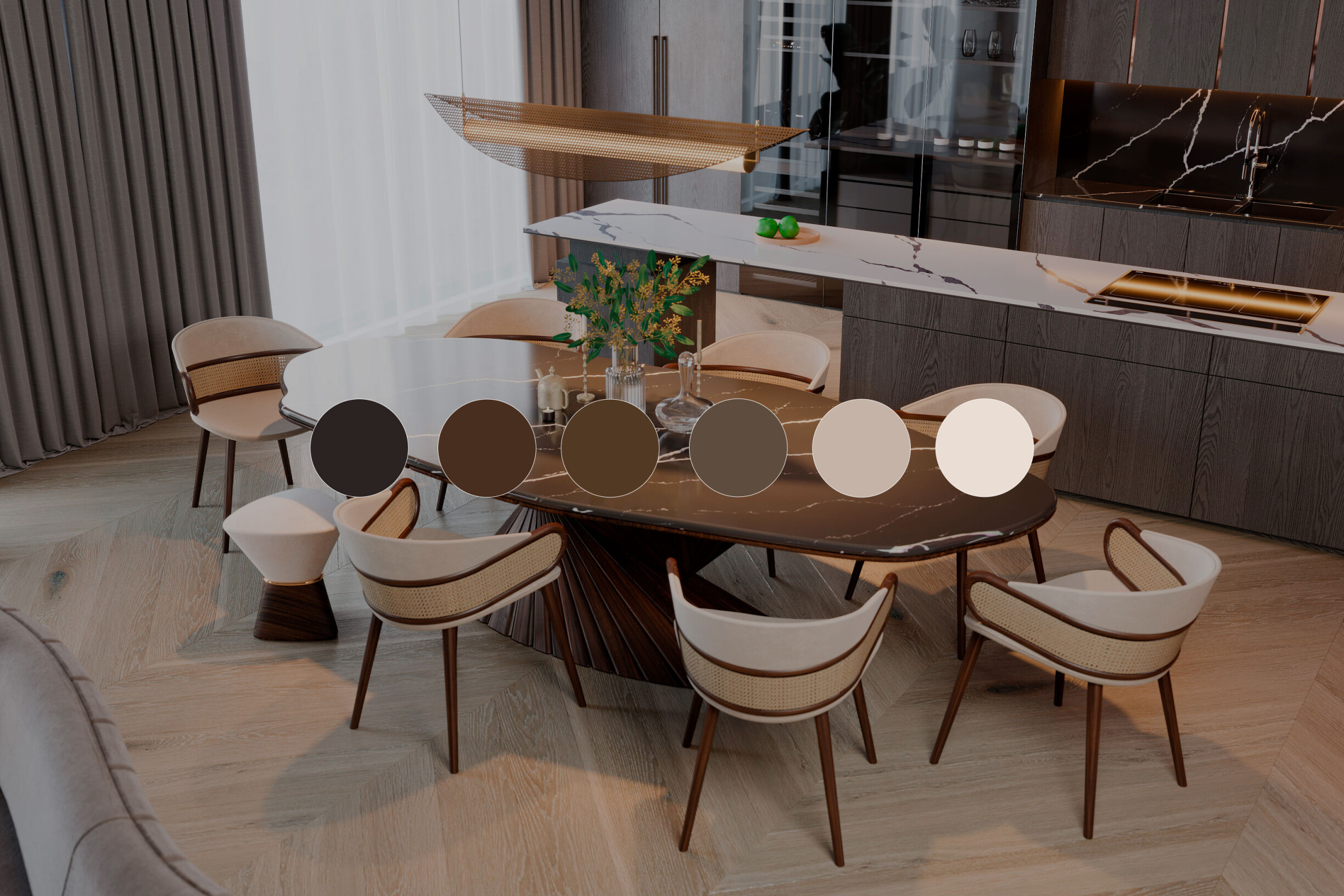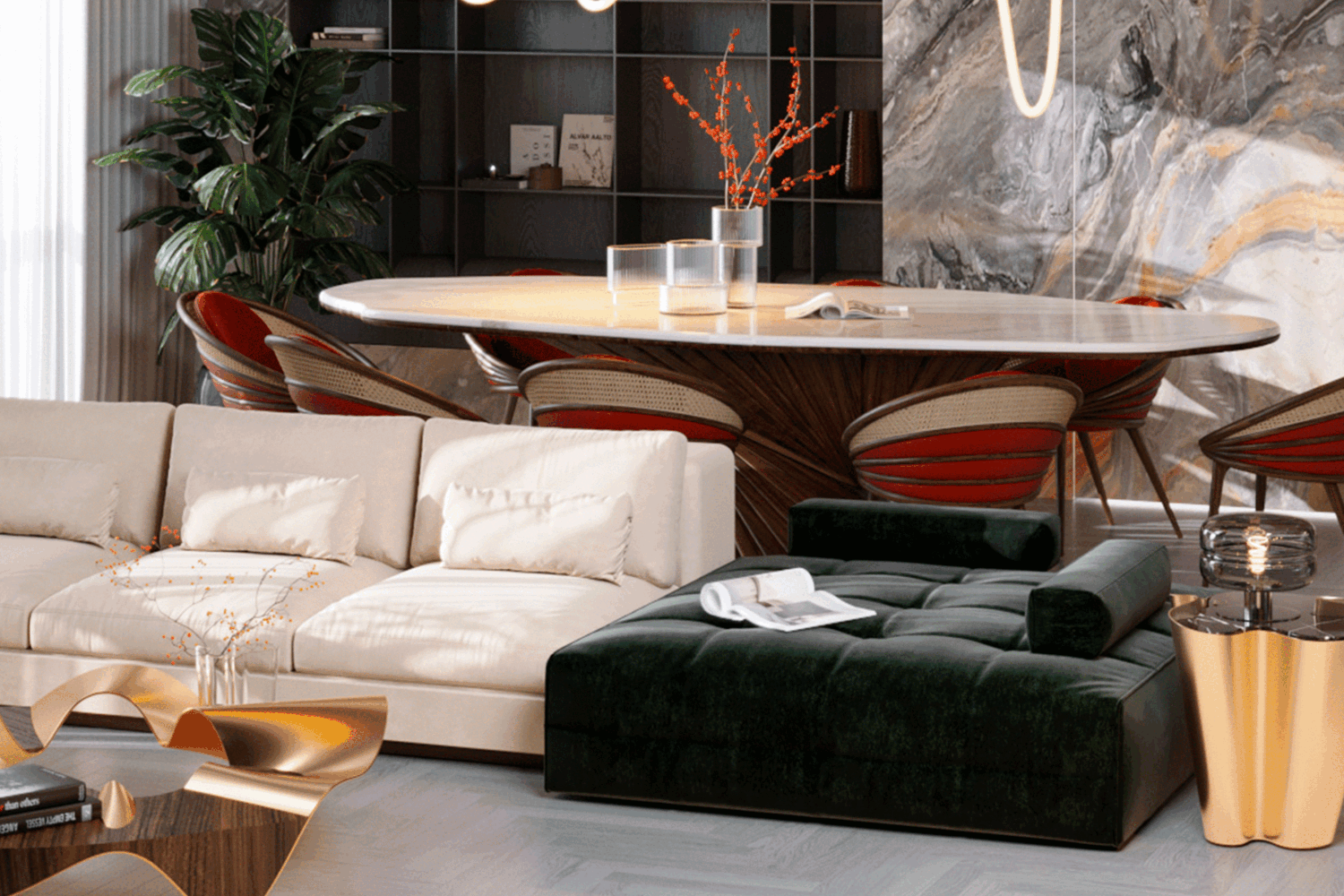One of the biggest challenges for an interior designer is balancing comfort and functionality. Each space, whether residential, commercial, or business, must be visually attractive but also comfortable and practical for its users. Therefore, ergonomics emerges as a crucial element, shaping how areas are designed and experienced by the inhabitants.
Ergonomics may sound technical initially, but its importance in interior design is undeniable. Ergonomics in interior design is not just limited to choosing comfortable furniture but covers a wide range of aspects, from the arrangement of objects to lighting and the use of colours.
In this article about ergonomics in interior design, we discover how small changes can make a big difference in how we experience and interact with the spaces around us.

At the heart of ergonomic interior design are the fundamental principles that guide the creation of comfortable and functional spaces. These principles include different aspects, such as the arrangement of furniture, use of materials and lighting.
"Thinking about design is hard, but not thinking about it can be disastrous."
Ralph Caplan, American design consultant
Ergonomics is the science that studies the interaction between human beings and their work, home, or leisure areas. It focuses on how you interact with spaces and how it makes you feel. The goal is to adapt the area to the needs, capabilities, and limitations of the people who use it, aiming to optimize comfort, safety, and efficiency.
1. Appropriate choice of furniture
Choosing appropriate furniture is one of the most important aspects of ergonomics in interior design. Furniture must be comfortable and functional and provide adequate support for the body.
For example, when choosing a sofa for the living room, consider the depth and height of the seat to ensure adequate comfort. Likewise, when selecting a bed for a bedroom project, choose a mattress that offers sufficient support to the spine and promotes a good night's sleep.
2. Adequate lighting
Lighting is another crucial aspect of ergonomics in interior design. Adequate lighting makes the area more visually pleasing and helps prevent eye fatigue and headaches. Natural light is the best option whenever possible, as it is soft and even. However, in spaces where natural light is limited, it is crucial to invest in artificial lighting that is adjustable and diffused.
In a home office, for example, use directional lamps to illuminate specific areas, such as the work desk. This allows you to adjust the light as needed, avoiding reflections on your client’s computer screen and providing a more comfortable and productive working space.
3. Colours and textures
The colours and textures of materials also play a crucial role in the ergonomics of the area. Soft and neutral colours create a feeling of calm and relaxation, while vibrant colours can stimulate creativity and productivity. Likewise, soft materials and textures that are pleasant to the touch, make the space more welcoming and comfortable. Choosing textures in an interior decoration project is crucial to creating an attractive and cozy area.
In a bedroom, opt for neutral and calming colours, such as shades of blue and green, to promote a relaxing atmosphere conducive to sleep. Combine these tones with soft fabrics and pleasant textures, like cotton and linen, to create a warm and inviting room.
Finally, value fabrics. The fabrics used in a space can impact comfort and safety. Choose breathable fabrics, such as cotton, linen, and leather, that allow easy movements.

4. Efficient layout and adequate circulation
Finally, the space layout and circulation must be carefully planned to ensure a comfortable experience. Furniture must be arranged in such a way as to allow free and unimpeded movement, avoiding obstacles and congestion. For example, in a living room, position the sofa so that people can move around it freely, creating a warm and inviting area. Modular solutions, such as Mies sofa from ALMA de LUCE, are an excellent option, allowing the space to be adapted to your client’s needs.
The efficient layout makes the room more functional, safer, and accessible. A moodboard is the best way to ensure each project's efficiency and ergonomic design. The moodboard acts as a visual map, ensuring that every detail chosen is aligned with the initial vision, resulting in an efficient and ergonomic layout.

The answer lies in the very essence of human-centered design. By planning ergonomic spaces, designers ensure the physical comfort of their clients but also promote their emotional and mental well-being. An ergonomically designed area reduces fatigue, prevents injuries, and provides a feeling of welcome and security. Ergonomics and spatial planning also help in creating spaces that are inclusive and accessible by considering the needs of people with limitations. With human-centered designs, interior designers can promote better posture and comfortable movement, encouraging a diverse space.
Imagine a living room where the furniture is awkwardly arranged, creating obstacles to circulation and making interaction between people difficult. Or a poorly lit office where employees struggle to focus due to inadequate light. These are examples of spaces that lack an ergonomic approach, where functionality is sacrificed for aesthetics.
Regarding residential interior design, ergonomics is crucial in creating comfortable and functional spaces for residents.
For example, the furniture layout is essential in the living room. Be sure to create comfortable living areas, with a spacious sofa like the Antelope Canyon from ALMA de LUCE and armchairs arranged in a way that allows for effortless conversation. Coffee or side tables are also crucial for supporting drinks and personal items. The Coco side table from ALMA de LUCE is the perfect choice.

Comfort is the priority in the bedroom for a good night's sleep. Choose a bed that suits the size of the space and your clients’ needs.
By applying the principles of ergonomics to residential areas, interior designers can create spaces that meet the functional needs of residents, but also promote comfort and well-being in their daily lives.
Work areas, whether at home or in corporate spaces, also benefit from applying ergonomic principles.
In the home office, a space designed to enhance productivity and creativity, ergonomic furniture that offers adequate support to the body during extended work periods is essential. An office chair with height adjustments, lumbar support, and armrests is necessary for maintaining correct posture and avoiding back pain.
Furthermore, the layout must be planned to provide free and unhindered circulation. The work table should be positioned to allow good posture, and furniture or equipment that creates obstacles or hinders movement should be avoided.
We must remember lighting. Adequate lighting helps prevent eye fatigue and improves visual comfort. Prefer natural light whenever possible and complement it with adjustable and diffused artificial lighting.
Another tip is encouraging regular breaks and stretching exercises to prevent muscle and joint problems. You can, for example, include a sofa for your client to use for short breaks during working hours. For a smaller space, the option could be the Matterhorn sofa from ALMA de LUCE or even the Amasunzu sofa.
The best way to create an ergonomic interior is to seek the advice of a professional interior designer.

When planning and designing spaces, always remember the importance of ergonomics. Consider your client's needs and characteristics in every design decision. Doing so will create spaces that delight your client and promote comfort, well-being, and functionality.
Did you like this article? You can follow us on Instagram, Facebook, and Pinterest to stay updated with the latest architecture, design, and interiors news.